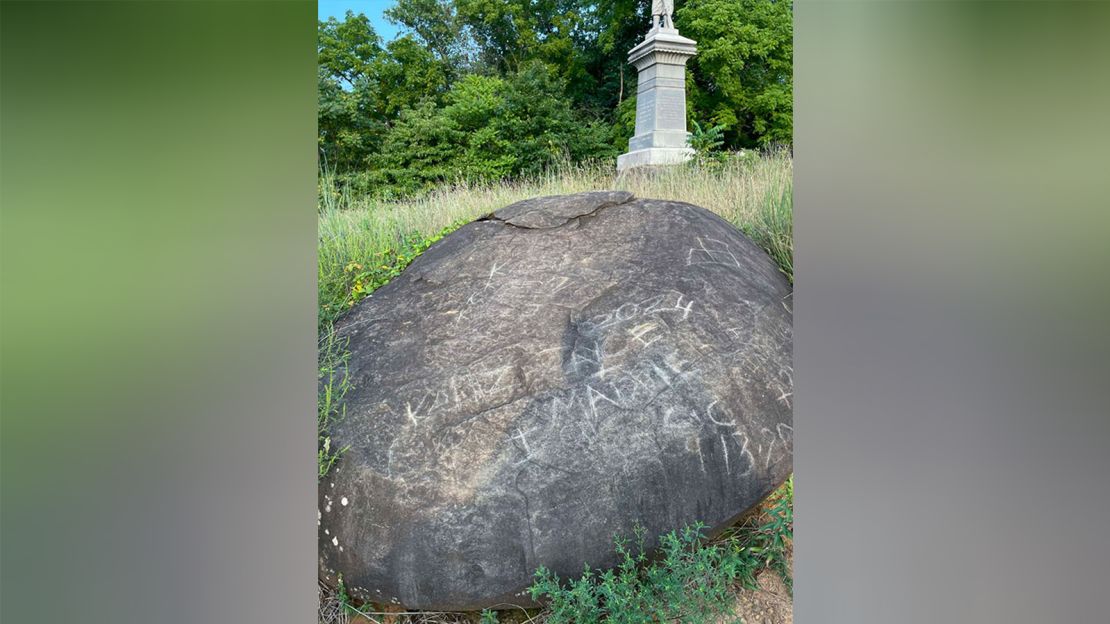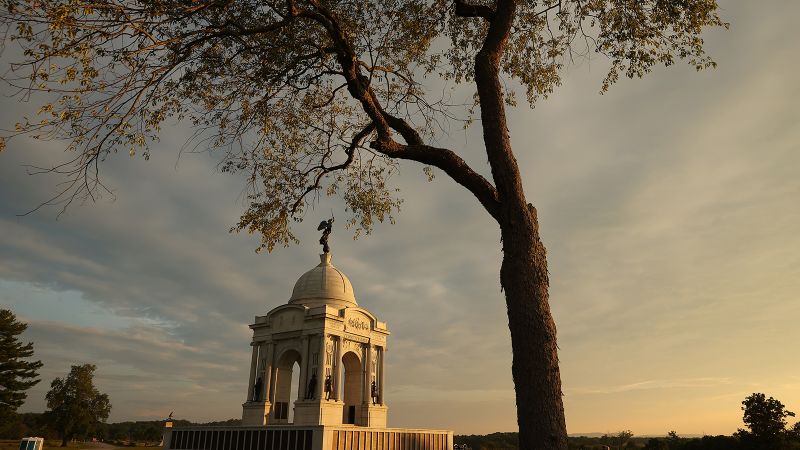CNN
—
Vandalism has come to another US historic site, Pennsylvania’s Gettysburg National Military Park, where a pivotal battle of the Civil War was fought.
A statement shared by the National Park Service on August 21 revealed that someone – or, more likely, multiple someones – had spray painted and carved graffiti on the War Department Observation Tower and on a large rock nearby over a period of a few days.
“Our hearts sank when these two cases of vandalism were reported within days of each other,” Park Superintendent Kristina Heister said in a statement. “We were fearful that the graffiti carved into the rock may be there for future generations.”
Luckily, park staff was able to clean and remove all traces of the vandalism.
A pre-repair photo of the rock shared to Gettysburg Battlefield’s social media appears to show the names Jayce and Maddie, a heart and the date 9/13/20 carved into the rock, along with other writing.
Heister thanked both the staffers who were able to remove the graffiti and park visitors who alerted them to the damage.
She added that, even though the vandalism didn’t cause permanent destruction, the NPS is still interested in locating the people who are behind it.
“We can’t do it alone. Vandalism of irreplaceable historic objects and structures that belong to all Americans should concern everyone. We all share in the responsibility of protecting and caring for this special place and everyone is a steward of the heritage, history, and resources of Gettysburg during their visit.”

Vandalism at America’s national parks is not uncommon, nor is asking the public to help catch the guilty parties.
In 2020, a Canadian man who had written “Steve & Lacy” on rocks and historic structures in California’s Joshua Tree National Forest turned himself in and made an apology after an acquaintance saw photos of the graffiti on social media.
More recently, rangers at the Grand Canyon – the second most visited national park in the US – issued a strong warning against leaving “love locks” hooked onto structures at the Arizona park.
In addition to weighing down these structures, the keys – which people throw into a body of water after securing the lock – were being eaten by the endangered California condors who call the park home. The birds, who are attracted to shiny objects, would become ill after eating the keys and sometimes needed surgery.
While many people see “love locks” as a symbol of romance, the NPS considers them graffiti and litter.
“Love is strong,” the Grand Canyon wrote on its Facebook page, “but our bolt cutters are stronger.”
